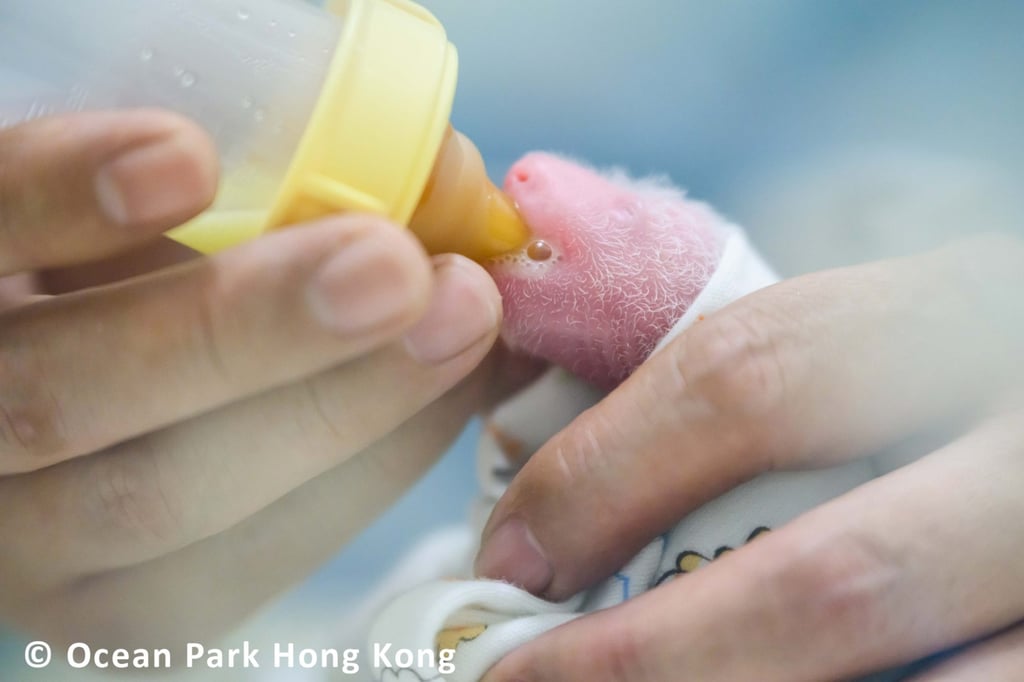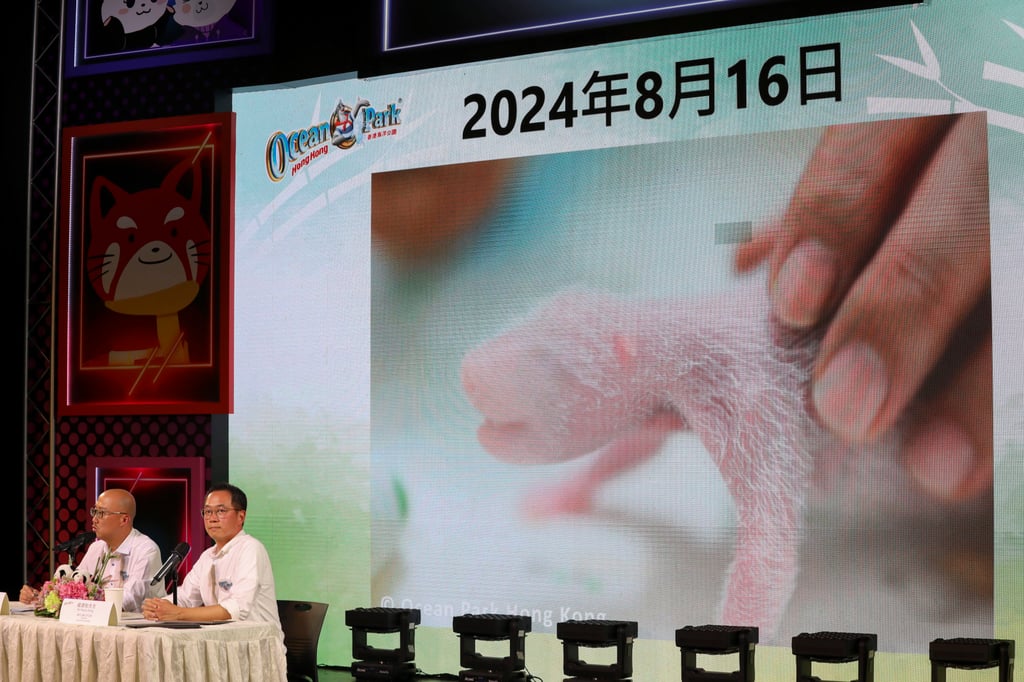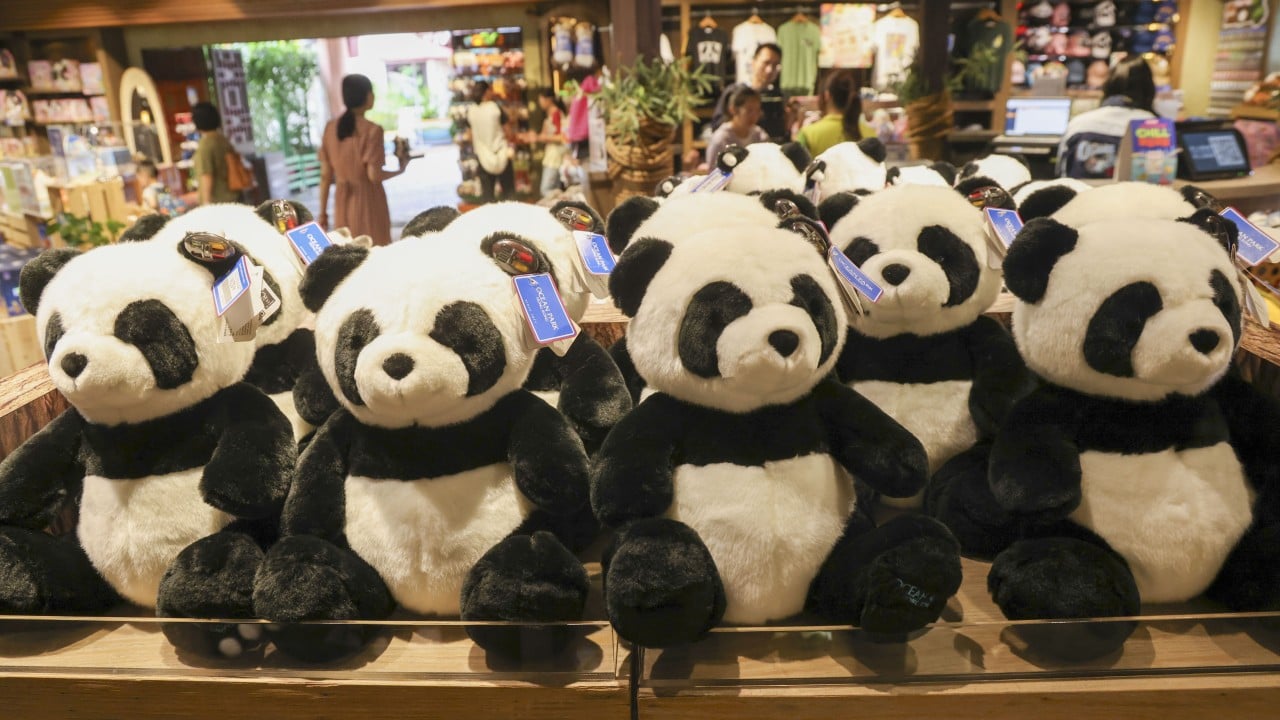Excitement is mounting over Hong Kong’s sudden surfeit of pandas, with tourism experts and lawmakers calling for the city to incorporate the six animals into its branding, develop copyrighted products around them and even adorn the planes of flag carrier Cathay Pacific Airways with their furry likeness.
The city on Thursday was surprised to learn that Ying Ying had given birth to twins with mate Le Le after more than a decade of trying. They will soon be joined by another pair of young adults gifted by Beijing to mark the 27th anniversary of the city’s return to Chinese rule, leaving Hong Kong with a small family of the rare bears.
The chairman of Ocean Park, which houses the pandas, said the two cubs had provided a fresh incentive for staff to seek out new sources of revenue and the facility would focus on ways to capitalise on the appeal of having six pandas in one place.
“As for the panda economy, of course we will consider every business opportunity to increase visitor numbers,” Paulo Pong Kin-yee said on Friday.
Pong was part of a government-led delegation to Chengdu in Sichuan province to negotiate arrangements to bring over the two giant pandas gifted by Beijing. They are expected to arrive by the end of September, and Pong said he was confident the park had enough manpower and resources to care for all of the pandas.
Ocean Park uploaded a clip on Saturday of a cub being fed milk on a new social media account dedicated to providing daily updates on the newborns and the other pandas.

Lawmaker Michael Tien Puk-sun called the new pandas a “game changer” for the city’s tourism strategy.
“Hong Kong lacks things that money cannot buy,” he said. “If it can be bought with money, there is plenty of that around the world. How do we stand out? It is with these pandas.”
Ying Ying gave birth to a female cub and then a male one, becoming the oldest first-time giant panda mother at age 19, which is the equivalent of 57 human years.
“I absolutely think that this will help boost our economy. It is much better than fireworks,” Tien said, referring to monthly pyrotechnic shows over Victoria Harbour.
Legislator Chan Yung said the bears would reshape tourism development. His party, the Democratic Alliance for the Betterment and Progress of Hong Kong, had earlier pushed for Chief Executive John Lee Ka-chiu to include measures based around a “panda economy” in his coming policy address.
The city could promote the distinctiveness of Hong Kong’s furry residents and develop a range of products based on them, he said.

Chan suggested the use of outdoor displays, licensed merchandise and painting Cathay Pacific aircraft with panda designs.
Timothy Chui Ting-pong, executive director of the Hong Kong Tourism Association, urged Ocean Park to develop panda-related intellectual property to fully capitalise on the tourism potential of the bears.
“Pandas can be seen in many places across the globe, but if you can create panda-themed intellectual property and make it ours, then tourists aren’t just here for the pandas but also related experiences and merchandise,” Chui said.
He also suggested the city replace its current dragon mascot with the giant panda.
Developing a range of panda mascots, merchandise and promotional campaigns would benefit the city’s retail industry, Chui said.
Freddy Yip Hing-ning, president of the Hong Kong Travel Agent Owners Association, agreed the pandas would bring “new elements” to local tourism, but he was more cautious about the prospect of people coming to the city solely to see them.
“It’s worth looking into whether there’s a chance of ramping up promotional efforts regionally and in Southeast Asia, to see if people would fly over for a visit,” Yip said.
Lawmaker Lo Wai-kwok of the Business and Professionals Alliance for Hong Kong said an around-the-clock live stream of panda cubs could prove popular, citing mainland websites that showed similar content, and could draw consistent traffic from enthusiasts.
The newborns could also help bolster patriotism among residents, he added.
“We should approach national education from a range of angles,” he told a radio programme. “Different flora and fauna that carry Chinese characteristics can be excellent topics for national education, alongside our culture, history and the nation’s rapid technological advancement.”
Additional reporting by Lo Hoi-ying and Ambrose Li


